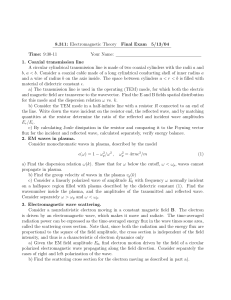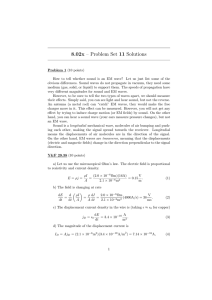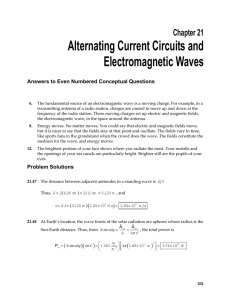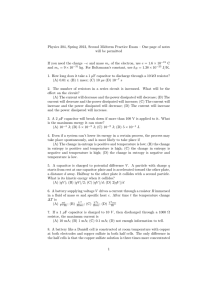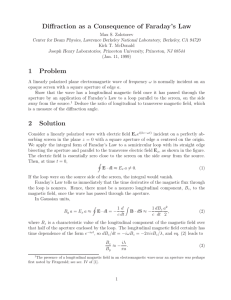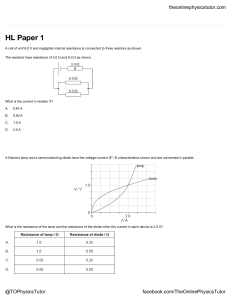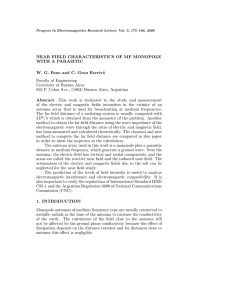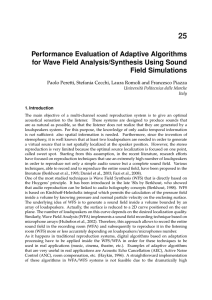Massachusetts Institute of Technology Final Examination
advertisement
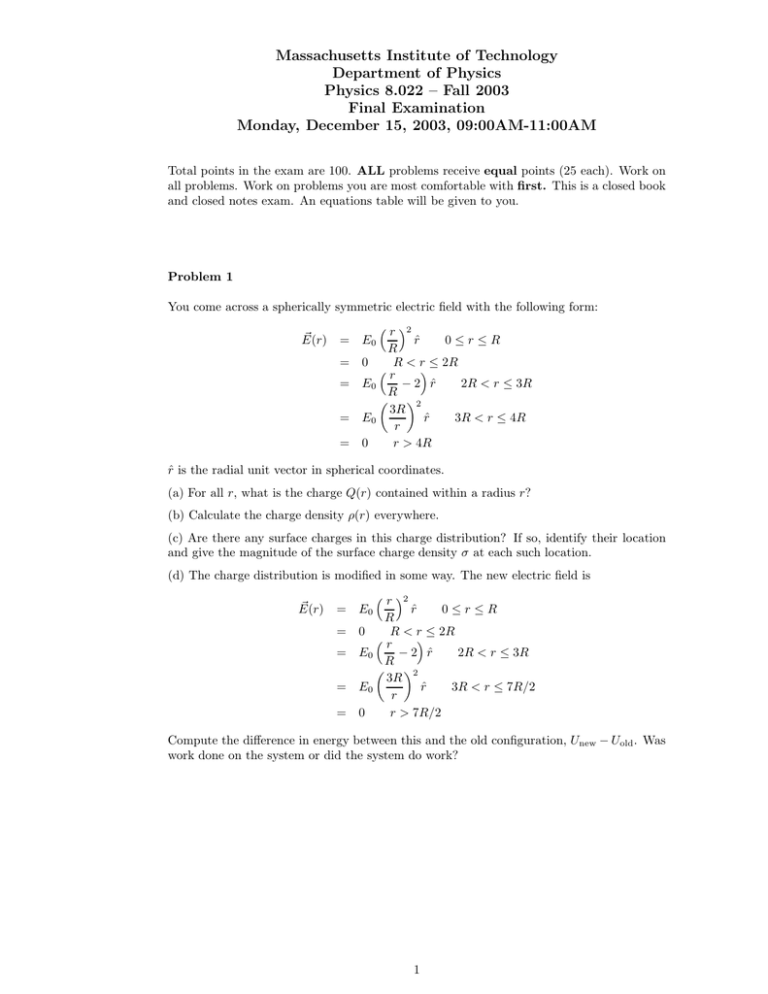
Massachusetts Institute of Technology Department of Physics Physics 8.022 – Fall 2003 Final Examination Monday, December 15, 2003, 09:00AM-11:00AM Total points in the exam are 100. ALL problems receive equal points (25 each). Work on all problems. Work on problems you are most comfortable with first. This is a closed book and closed notes exam. An equations table will be given to you. Problem 1 You come across a spherically symmetric electric field with the following form: ω E(r) = E0 = = = = � r 2 r̂ 0�r�R R 0 R < r � 2R �r E0 − 2 r̂ 2R < r � 3R R �2 � 3R r̂ 3R < r � 4R E0 r 0 r > 4R r̂ is the radial unit vector in spherical coordinates. (a) For all r, what is the charge Q(r) contained within a radius r? (b) Calculate the charge density �(r) everywhere. (c) Are there any surface charges in this charge distribution? If so, identify their location and give the magnitude of the surface charge density � at each such location. (d) The charge distribution is modified in some way. The new electric field is ω E(r) = E0 = = = = � r 2 r̂ 0�r�R R 0 R < r � 2R �r E0 − 2 r̂ 2R < r � 3R R � �2 3R E0 r̂ 3R < r � 7R/2 r 0 r > 7R/2 Compute the difference in energy between this and the old configuration, Unew − Uold . Was work done on the system or did the system do work? 1 Problem 2 The circuit illustrated in the following figure is driven by an EMF V = Vo ei�t . At time t1 , the switch is closed on A. (a) Calculate the complex impedance ZXY of the circuit. (b) What is the non-zero frequency �o that maximizes the average power dissipated in the resistor R? 3) For � = �o , what is the average power dissipated in the resistor R? � 4) Calculate IR , the current flowing through the resistor R when � = �1 = 1/ 2CL. What � is the phase between IR and V when � = �1 = 1/ 2CL? Is IR leading or lagging V? At time t2 , the switch is closed on B. 5) What is the complex impedance ZXY of the circuit now? 6) How does |VR | depend on the frequency �? Draw a graph. Problem 3 The electric field of a traveling electromagnetic wave in vacuum is given by ω = 10(3ˆ E x + 4ˆ z)sin(ky + 2σ109 t) statvolt/cm. All given and requested numerical quantities are in CGS units. (a) What is the direction of propagation of this wave? (b) What is the frequency f of this wave? (c) What is the wavelength ρ of this wave? (d) What is the amplitude of the electric field Eo ? (e) What is the amplitude of the corresponding magnetic field Bo ? ω to the given E ω above. (f) Find the corresponding magnetic field B (g) What is the polarization of this wave? ω for this electromagnetic wave. (h) Find the Poynting vector S (i) A totally absorbing photodetector of flat surface A lies perpendicularly to the direction of propagation. What is the pressure the wave exerts as impinges on it? What is the intensity of the electromagnetic radiation collected by the photodetector? 2
